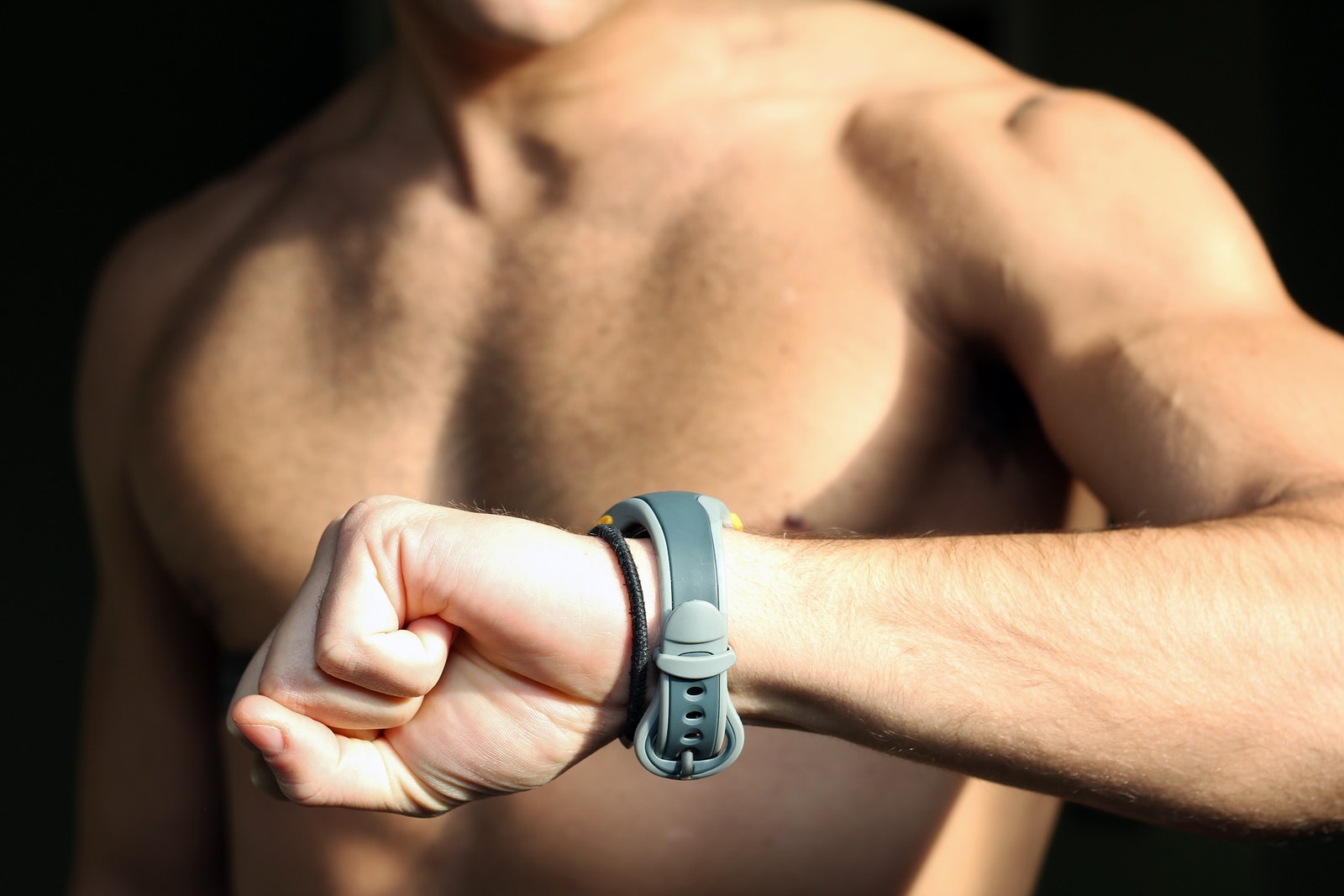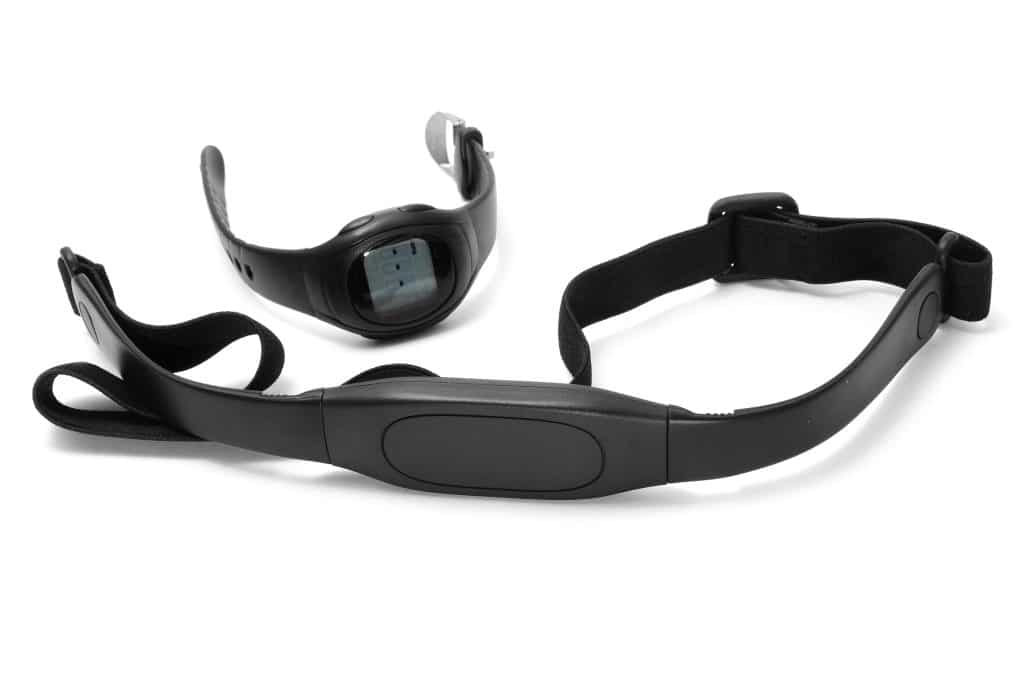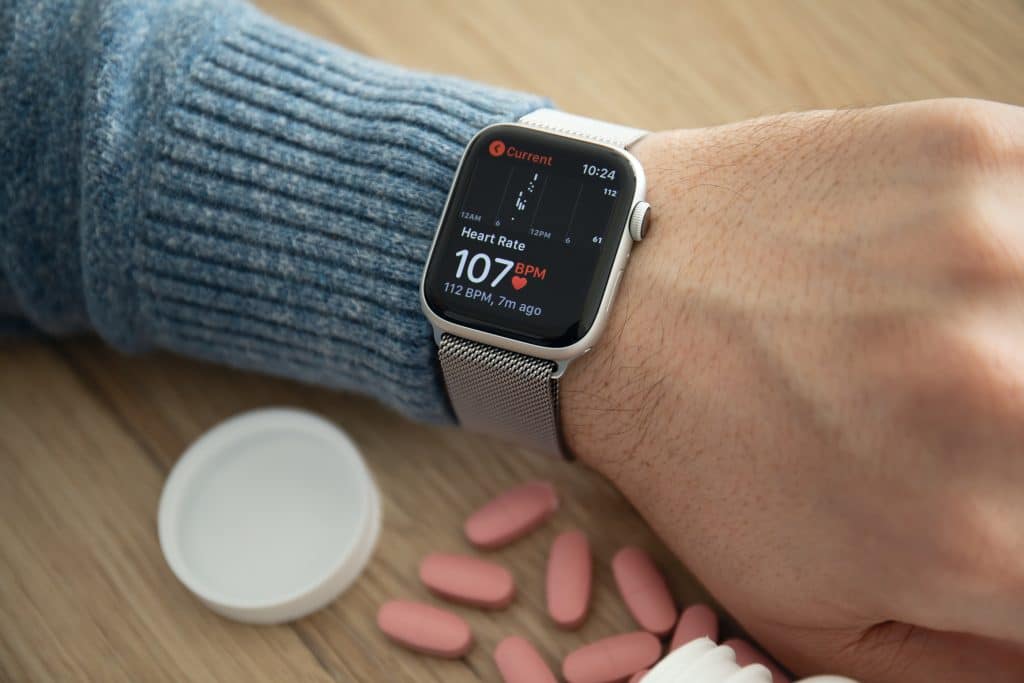The Best Heart-Rate Monitors: Full Review
This comprehensive review will provide valuable insights into heart-rate monitors, their features, pros and cons, and how to select the right one to enhance your fitness and health goals.
Introduction to Heart-Rate Monitors
When it comes to fitness and health, understanding your body’s response to exercise is essential. One of the most vital metrics to track is your heart rate. This metric provides valuable insights into your cardiovascular health and fitness levels. Heart-rate monitors have revolutionized how we track and interpret this information, empowering individuals to make data-driven decisions about their health and well-being.
This introduction serves as a gateway into the world of heart-rate monitors, explaining their significance, how they work, and why you might need one. Whether you’re a seasoned athlete striving for peak performance, a fitness enthusiast working on your well-being, or someone looking to monitor your heart for medical reasons, heart-rate monitors can be invaluable on your journey to a healthier and more active lifestyle.
Let’s dive into the world of heart-rate monitoring and discover how these devices can help you gain better control over your cardiovascular health and fitness goals.
Types of Heart-Rate Monitors
Heart-rate monitors come in various forms, each with its own set of features and advantages. The choice of a heart-rate monitor type depends on your specific needs, activities, and personal preferences. Here are the primary types of heart rate monitors:
- Chest Strap Heart-Rate Monitors:
-
- How They Work: These monitors consist of a chest strap that you wear across your chest and a sensor that detects your heart rate. The data is then transmitted to a compatible device, such as a smartphone or fitness watch, via Bluetooth or ANT+ technology.
- Advantages: They tend to be highly accurate and are favored by serious athletes for their precision.
- Considerations: Some users find chest straps less comfortable and may only be suitable for some-day wear.
- Wrist-Based Heart-Rate Monitors:
-
- How They Work: These monitors are integrated into fitness watches or activity trackers, using LED sensors to measure your pulse from your wrist. They continuously monitor your heart rate throughout the day.
- Advantages: They are convenient and provide all-day monitoring without a chest strap. Many offer additional fitness and health tracking features.
- Considerations: Accuracy may vary depending on the brand and model. They might not be as precise as chest strap monitors during intense activities.
- Ear-Based Heart-Rate Monitors:
-
- How They Work: Ear-based heart-rate monitors use optical sensors similar to wrist-based monitors, but they are placed in or on the ear. Some wireless earbuds now include heart-rate monitoring capabilities.
- Advantages: They are discreet and suitable for activities like running or cycling.
- Considerations: Ear-based monitors are less common, and their accuracy can be affected by ear placement and movement.
- Optical Heart-Rate Monitors:
-
- How They Work: These monitors use optical sensors to measure your heart rate by shining light into your skin and measuring the blood flow changes. They can be found in various devices, including fitness watches, smart glasses, and clothing.
- Advantages: They offer versatility regarding where and how you wear them and often provide additional health-tracking features.
- Considerations: Accuracy can vary depending on the quality and design of the sensor.
- Smartwatch Heart-Rate Monitors:
-
- How They Work: Many modern smartwatches, like those from Apple and Samsung, include built-in heart-rate monitoring features. They use optical sensors on the wrist to continuously track heart rate and provide fitness and health insights.
- Advantages: These devices offer various functions beyond heart-rate monitoring, making them versatile for everyday use.
- Considerations: While accurate for most users, precision may differ from that of specialized fitness monitors during intense workouts.
Selecting the right type of heart-rate monitor depends on your intended use, accuracy requirements, comfort preferences, and the additional features you desire. Whether you’re an athlete, fitness enthusiast, or simply looking to track your health, there’s likely a heart-rate monitor that suits your needs.
Key Features to Consider in Heart-Rate Monitors
When choosing a heart-rate monitor, it’s important to consider several key features to ensure you select the one that best meets your needs. Here are the essential features to keep in mind:
- Accuracy and Precision:
-
- Look for a heart-rate monitor that provides accurate and precise readings. High-quality sensors and advanced algorithms contribute to better accuracy.
- Connectivity Options:
-
- Check if the monitor can connect to your preferred devices and apps. Most monitors use Bluetooth or ANT+ technology to link to smartphones, fitness watches, or gym equipment.
- Battery Life:
-
- Consider the monitor’s battery life, especially if you plan to use it for extended periods. Some monitors offer long-lasting batteries, while others may require frequent recharging.
- Compatibility with Fitness Apps and Devices:
-
- Ensure that the monitor is compatible with the fitness apps and devices you already use or plan to use. Popular apps include Strava, Garmin Connect, and Fitbit.
- Water Resistance:
-
- Opt for a water-resistant model if you use the monitor for activities like swimming or in adverse weather conditions. Check the specific water resistance rating, typically measured in meters (e.g., 50m), to ensure it suits your needs.
- Heart-Rate Zones:
-
- Some monitors allow you to set heart rate zones, helping you stay within your desired intensity level during workouts. This is especially useful for targeted training.
- Data Storage and History:
-
- Consider the device’s ability to store and review heart-rate data over time. This feature is beneficial for tracking progress and analyzing trends.
- Display and User Interface:
-
- Evaluate the display and user interface. Monitors with clear, easy-to-read screens and intuitive navigation are more user-friendly.
- Multi-Sport Tracking:
-
- If you engage in activities like running, cycling, and swimming, look for a monitor that can track multiple sports and provide specific metrics for each.
- Customization:
-
- Some monitors allow you to customize settings, screen layouts, and data fields, tailoring the device to your preferences.
- Smart Notifications:
-
- If you want to receive smartphone notifications on your heart-rate monitor, choose a model with this feature. It allows you to stay connected while working out.
- Price:
-
- Set a budget that aligns with your needs and the features you prioritize. Basic heart-rate monitors are cost-effective, while advanced models may be expensive.
- Brand Reputation and Warranty:
-
- Research the brand’s reputation and customer reviews to ensure reliability and customer satisfaction. Also, check if the monitor has a warranty for added peace of mind.
By carefully considering these key features, you can select a heart-rate monitor that aligns with your fitness and health goals, whether you’re an athlete striving for peak performance or someone focused on improving overall well-being.
Top Heart-Rate Monitors in the Market
Regarding heart-rate monitors, numerous options are available, each with features and advantages. To help you make an informed choice, here are some of the top heart-rate monitors in the market, catering to a range of preferences and needs:
- Garmin Forerunner 945:
-
- Key Features: This advanced GPS watch offers precise heart-rate monitoring, sports tracking, and performance analytics. It’s suitable for serious athletes and fitness enthusiasts.
- Polar H10:
-
- Key Features: Known for its exceptional accuracy, the Polar H10 chest strap is a favorite among athletes and fitness professionals. It can sync with various fitness apps and devices.
- Apple Watch Series 7:
-
- Key Features: Apple’s smartwatch includes a built-in heart-rate monitor that provides continuous tracking, ECG functionality, and compatibility with numerous health and fitness apps.
- Wahoo TICKR X:
-
- Key Features: This chest strap monitor offers excellent accuracy and versatility. It’s compatible with smartphones and various fitness equipment, making it a great choice for gym-goers.
- Fitbit Charge 5:
-
- Key Features: Fitbit’s Charge 5 is a wrist-based heart-rate monitor with additional health-tracking features like sleep monitoring and stress management. It’s suitable for those looking for all-day monitoring.
- Garmin HRM-Pro:
-
- Key Features: Garmin’s HRM-Pro chest strap is designed for serious athletes. It offers advanced metrics like running dynamics and is compatible with various Garmin devices.
- Polar Vantage V2:
-
- Key Features: This multisport watch from Polar combines heart-rate monitoring with GPS, recovery tracking, and sleep analysis. It’s a versatile choice for athletes.
- Coros Pace 2:
-
- Key Features: Coros’ Pace 2 is a budget-friendly multisport watch with accurate heart-rate monitoring and long battery life, making it ideal for endurance activities.
9.Scosche Rhythm+ 2.0:
-
- Key Features: The Scosche Rhythm+ 2.0 is an armband heart-rate monitor with accuracy and comfort, making it a great choice for various sports and activities.
- Suunto 7:
-
- Key Features: Suunto’s smartwatch combines heart-rate monitoring with GPS and topographic maps, making it a strong contender for outdoor enthusiasts and hikers.
These heart-rate monitors cater to different needs and budgets, whether you’re an athlete aiming for peak performance, a fitness enthusiast looking to improve your well-being, or someone interested in health tracking throughout the day. The choice ultimately depends on your specific requirements and preferences.
Pros and Cons of Heart-Rate Monitors
Heart-rate monitors offer numerous advantages, but they also come with some limitations. Understanding both the pros and cons will help you make an informed decision about whether a heart-rate monitor is right for you.
Pros:
- Accurate Monitoring: Heart-rate monitors, especially chest strap models, provide accurate and real-time data on your heart rate, allowing you to gauge the intensity of your workouts.
- Customized Training: Heart-rate monitors help tailor your workouts to specific heart-rate zones, optimizing training for endurance, fat burning, or performance.
- Health Insights: Heart-rate monitors can provide insights into your cardiovascular health and fitness level, helping you set and achieve fitness goals.
- Motivation: Tracking your heart rate can be motivating. You can see your progress, which can encourage you to push yourself further.
- Safety: Monitoring your heart rate during exercise can help prevent overexertion or pushing yourself too hard, reducing the risk of injury.
- All-Day Monitoring: Wrist-based monitors offer continuous heart-rate tracking throughout the day, providing insights into your resting heart rate and stress levels.
- Compatibility: Heart-rate monitors often sync with fitness apps, smartwatches, and gym equipment, allowing you to centralize your health and fitness data.
Cons:
- Comfort: Chest strap heart-rate monitors can be uncomfortable for some users, especially during extended workouts.
- Cost: Advanced heart-rate monitors with additional features can be expensive and might only fit some people’s budget.
- Accuracy Variability: Wrist-based monitors can be less accurate, especially during high-intensity activities that involve a lot of arm movement.
- Battery Life: Some heart-rate monitors require frequent recharging, which can be inconvenient for all-day monitoring or long workouts.
- Learning Curve: Understanding and effectively using heart-rate data can require a learning curve, especially if you’re new to heart-rate monitoring.
- Data Overload: While data can be motivating, it can also overwhelm some users, leading to unnecessary stress.
- Skin Contact: Most monitors need consistent skin contact for accuracy, which can be challenging during sweaty or wet conditions.
In summary, heart-rate monitors are valuable tools for individuals looking to improve their fitness, track their health, and optimize their workouts. However, they come with some limitations, particularly regarding comfort and cost. It’s essential to weigh the pros and cons against your personal fitness goals and preferences to determine whether a heart-rate monitor is the right choice.
How to Choose the Right Heart-Rate Monitor
Selecting the right heart-rate monitor can significantly impact your fitness and health journey. Here’s a step-by-step guide to help you choose the heart rate monitor that best aligns with your goals and preferences:
- Determine Your Goals:
-
- Clarify your objectives. Are you a serious athlete aiming for peak performance, a fitness enthusiast working on well-being, or someone monitoring health for medical reasons? Your goals will shape your monitor choice.
- Choose the Type:
-
- Decide on the type of heart-rate monitor that suits your needs. Chest strap monitors offer precision, while wrist-based monitors are convenient for all-day tracking. Consider other types like ear-based or optical monitors as well.
- Accuracy and Precision:
-
- If accuracy is crucial, opt for a chest strap monitor or a wrist-based model known for its precision. This is vital for athletes and those engaged in intense training.
- Compatibility:
-
- Ensure the monitor is compatible with the devices and apps you plan to use. Check if it connects seamlessly with your smartphone, fitness watch, or gym equipment.
- Battery Life:
-
- Consider your usage pattern. If you plan to use the monitor for extended periods, opt for one with a longer battery life. Some models may need daily recharging, while others last for weeks.
- Water Resistance:
-
- If you intend to use the monitor for swimming or in wet conditions, choose a model with sufficient water resistance. The specific water resistance rating should align with your intended use.
- Additional Features:
-
- Think about extra features that matter to you. This might include heart-rate zones, data storage, history tracking, and compatibility with other health metrics like sleep and stress.
- Price Range:
-
- Set a budget that reflects your requirements and the features you prioritize. Basic heart-rate monitors are cost-effective, while advanced models may be expensive.
- Brand Reputation:
-
- Research the brand’s reputation and read customer reviews to ensure reliability and customer satisfaction.
- Trial and Comfort:
-
- Try on the heart-rate monitor or wear it to assess comfort. Chest strap monitors, in particular, can be uncomfortable for some users.
- Return Policy:
-
- Check the retailer’s or manufacturer’s return policy if the monitor doesn’t meet your expectations.
- Expert Advice:
-
- If you need more clarification about your choice, seek advice from fitness professionals, sports coaches, or healthcare providers who can provide tailored recommendations.
By following these steps, you can make a well-informed decision about your heart-rate monitor. Whether you’re an athlete looking to optimize your training, a fitness enthusiast striving for better health, or someone monitoring a medical condition, the right heart-rate monitor will be a valuable tool on your journey to improved fitness and well-being.
Using Your Heart-Rate Monitor
Once you’ve chosen the right heart-rate monitor for your needs, it’s essential to use it effectively to derive maximum benefit. Here’s how to use your heart rate monitor:
- Charge or Replace Batteries:
-
- Ensure your heart rate monitor is powered up. Charge it if it’s rechargeable, or replace batteries as needed.
- Wear It Correctly:
-
- Wear the monitor according to the manufacturer’s instructions. For chest strap monitors, ensure a snug but comfortable fit. For wrist-based monitors, position them properly on your wrist.
- Pair with Your Device:
-
- Connect your heart-rate monitor to your smartphone, fitness watch, or any other compatible device via Bluetooth, Wi-Fi, or ANT+ technology.
- Choose Your Activity:
-
- Select the activity or exercise mode that matches your workout. This can be running, cycling, swimming, or any other activity.
- Calibrate If Necessary:
-
- Some heart-rate monitors may require calibration for precise readings. Follow the calibration instructions provided by the manufacturer.
- Start Your Activity:
-
- Begin your workout or activity as usual. Your heart rate monitor will continuously track your heart rate throughout the session.
- View Real-Time Data:
-
- Keep an eye on your heart rate during exercise. Depending on your device, you’ll see real-time data on your heart rate, training zones, and more.
- Stay In Your Target Zone:
-
- Stay in the desired range if you’re training within specific heart-rate zones. Many monitors provide alerts if you go above or below your target zone.
- Track Progress:
-
- After your workout, review the data stored on your monitor or the connected device. This can include details like average heart rate, maximum heart rate, and calorie burn.
- Sync with Apps:
-
- If you’re using fitness apps, sync your heart rate monitor with the app to store and analyze your data. This can help you track progress over time.
- Regular Maintenance:
-
- Keep your heart rate monitor clean and well-maintained. Follow the manufacturer’s maintenance recommendations to ensure its longevity and accuracy.
- Interpret the Data:
-
- Understand what the heart rate data means for your training. Higher heart rates may indicate increased intensity, while lower heart rates may suggest lighter activity or recovery.
- Adapt Your Workouts:
-
- Use the data from your heart rate monitor to adjust your training regimen. You can increase or decrease intensity to reach your fitness goals more effectively.
- Consult Experts:
-
- If you need more clarification about interpreting your heart rate data or how to adapt your workouts, consult with fitness professionals or trainers for guidance.
Remember that the effectiveness of your heart rate monitor depends on consistent usage and understanding of the data it provides. Over time, you’ll become more attuned to your body’s response to different exercises, allowing you to optimize your workouts and make informed decisions about your fitness journey.
Maintenance and Care of Your Heart-Rate Monitor
Proper maintenance and care of your heart-rate monitor are essential to ensure accurate readings and prolong the device’s lifespan. Follow these guidelines to keep your monitor in optimal condition:
- Clean Regularly:
-
- Wipe the sensors or contact points with a clean, damp cloth to remove sweat and dirt after each use. For wrist-based monitors, also clean the underside of the watch.
- Replace Straps and Sensors:
-
- For chest strap monitors, check the strap for wear and tear. If the elastic or fabric is damaged, replace it to maintain accurate contact. Replace sensors if they become worn.
- Store Safely:
-
- Store your heart rate monitor in a cool, dry place when not in use. Avoid extreme temperatures or direct sunlight, as they can damage the device.
- Battery Maintenance:
-
- If your monitor uses replaceable batteries, replace them promptly when low to ensure consistent power. If it’s rechargeable, follow the manufacturer’s guidance for battery maintenance.
- Firmware Updates:
-
- Check for firmware or software updates for your monitor. Manufacturers occasionally release updates to improve functionality and accuracy.
- Water Resistance:
-
- If your monitor is water-resistant, rinse it with fresh water after use in saltwater or chlorinated pools. This helps prevent corrosion.
- Avoid Dropping:
-
- Handle your monitor carefully, and avoid dropping it, as this can damage the sensors or internal components.
- Read the User Manual:
-
- Familiarize yourself with the manufacturer’s recommendations for care and maintenance specific to your heart-rate monitor model. User manuals typically include valuable information.
- Strap Adjustment:
-
- Regularly check and adjust the chest strap’s tightness to maintain contact without causing discomfort during workouts.
- Charge Promptly:
-
- If your monitor is rechargeable, charge it promptly to ensure it’s ready for your next session. Avoid letting the battery completely discharge.
- Waterproofing Checks:
-
- If your monitor is advertised as waterproof, have it periodically checked by the manufacturer or authorized service centers to maintain its water resistance.
- Regular Checkups:
-
- Consider having your monitor checked and calibrated by a professional or manufacturer at recommended intervals for peak performance.
By following these maintenance and care tips, you can extend the life of your heart rate monitor and ensure it continues to provide accurate data for your workouts and health tracking. A well-maintained monitor enhances your fitness experience and helps you achieve your fitness and health goals effectively.
Safety and Health Considerations when Using a Heart-Rate Monitor
A heart rate monitor is generally safe. Still, it’s important to consider some safety and health aspects, especially if you have specific medical conditions or are using the monitor for intense workouts. Here are key considerations:
- Consult a Healthcare Professional:
-
- If you have any underlying medical conditions, especially heart-related issues, it’s wise to consult a healthcare professional before using a heart-rate monitor for vigorous exercise. They can provide guidance and recommend safe heart-rate zones.
- Stay Hydrated:
-
- Dehydration can affect your heart rate. Ensure you’re well-hydrated before and during exercise, particularly in hot or humid conditions.
- Don’t Rely Solely on Heart Rate:
-
- While heart-rate monitors are valuable tools, they are just one aspect of your overall health and fitness. Use them with other indicators, like perceived exertion and physical symptoms.
- Follow Your Doctor’s Recommendations:
-
- If your physician has provided specific heart-rate guidelines or restrictions, adhere to them while using your monitor.
- Listen to Your Body:
-
- If you experience dizziness, shortness of breath, chest pain, or any unusual symptoms during exercise, stop immediately and seek medical attention if necessary.
- Start Slowly:
-
- If you’re new to exercise or have yet to be active, start with low-intensity workouts and gradually increase intensity over time. Use your heart rate monitor to guide your progression.
- Warm Up and Cool Down:
-
- Always include a warm-up and cool-down phase in your workouts to allow your heart rate to adjust gradually.
- Balance Intensity:
-
- Avoid overexertion. While high-intensity training has benefits, balance it with lower-intensity sessions for recovery.
- Proper Technique:
-
- Ensure you use proper exercise techniques and form to prevent injuries that can indirectly affect your heart rate.
- Rest and Recovery:
-
- Include rest days in your exercise routine to allow your body to recover. Monitoring your resting heart rate can help assess your recovery state.
- Understand Your Zones:
-
- Familiarize yourself with heart-rate training zones to ensure you’re working at an appropriate intensity level for your goals: fat burning, endurance, or performance.
- Discontinue If Necessary:
-
- If you’re not feeling well or are under the weather, consider postponing or modifying your exercise session. Your heart rate can be affected by illness.
- Stay Informed:
-
- Keep up-to-date with the latest guidelines for heart health and exercise safety. Recommendations may evolve.
Remember, your safety and health are paramount. Suppose you have any concerns or doubts about using a heart-rate monitor. In that case, it’s always a good idea to seek advice from a healthcare professional or a qualified fitness trainer who can provide personalized guidance based on your unique circumstances.
Frequently Asked Questions (FAQs) about Heart-Rate Monitors
- What is a heart-rate monitor, and how does it work?
-
- A heart-rate monitor is a device that measures your heart rate in beats per minute. It typically uses sensors to detect your pulse, and this data is displayed on a screen or transmitted to a connected device.
- Are heart-rate monitors accurate?
-
- The accuracy of heart-rate monitors varies by type and brand. Chest strap monitors are generally considered the most accurate, while wrist-based monitors can be less precise, especially during high-intensity activities.
- What is the difference between a chest strap and a wrist-based heart-rate monitor?
-
- A chest strap monitor is worn around the chest and measures heart rate via electrical signals. Wrist-based monitors are worn on the wrist and use optical sensors to measure blood flow and heart rate.
- Can I use a heart rate monitor for swimming?
-
- Some heart-rate monitors are water-resistant and suitable for swimming. Check the specific water resistance rating of the monitor before using it in water.
- Do heart-rate monitors track other health metrics like sleep and stress?
-
- Some heart-rate monitors, particularly wrist-based models, offer additional health metrics like sleep tracking and stress analysis. Check the features of your specific monitor.
- Can heart-rate monitors replace a medical device for heart conditions?
-
- Heart rate monitors are not a medical device substitute for diagnosing or managing heart conditions. They can provide valuable information for fitness and wellness but are not intended for medical diagnoses.
- Do I need a smartphone or other devices to use a heart-rate monitor?
-
- While some heart-rate monitors can function independently, many are designed to sync with smartphones, fitness watches, or other devices to provide a more comprehensive fitness and health tracking experience.
- How do I determine my target heart rate zones?
-
- Your target heart rate zones depend on your fitness goals. You can calculate them using various methods, such as the Karvonen formula or online calculators. Consulting a fitness professional can also provide personalized guidance.
- Can I wear a heart-rate monitor all day?
-
- Wrist-based heart-rate monitors are designed for all-day wear, providing continuous heart-rate data. Chest strap monitors are typically used during workouts.
- Are there any health risks associated with using a heart-rate monitor?
-
- When used correctly, heart-rate monitors are safe. However, it’s important to listen to your body, avoid overexertion, and consult a healthcare professional if you have specific health concerns or conditions.
- How often should I replace the strap or sensors on a chest strap monitor?
-
- The frequency of replacement depends on the monitor’s quality and usage. Inspect the strap and sensors regularly for wear and tear and replace them to maintain accurate contact.
- Can I use a heart rate monitor during pregnancy?
-
- It’s advisable to consult with a healthcare professional before using a heart-rate monitor during pregnancy. While light exercise with a heart-rate monitor may be safe for many pregnant individuals, ensuring it aligns with your specific circumstances is important.
Remember that the information provided here is for general guidance, and you should always refer to the user manual and follow the manufacturer’s recommendations for your specific heart-rate monitor model. Consult a healthcare professional for personalized advice if you have specific health concerns or uncertainties.
Conclusion: Enhancing Your Fitness Journey with Heart-Rate Monitoring
Heart-rate monitoring has revolutionized the way we approach fitness and health. It offers valuable insights into your workouts, helps you track progress, and, most importantly, enhances your overall well-being. Whether you’re a dedicated athlete or looking to improve your health, a heart rate monitor is a versatile tool that benefits everyone.
In this comprehensive guide, we’ve explored the world of heart-rate monitors, from understanding their types and features to selecting the right one for your needs. We’ve delved into the pros and cons, usage guidelines, and maintenance tips to ensure you get the most out of your device.
Remember that the true power of a heart-rate monitor lies in its ability to help you make informed decisions about your fitness journey. By monitoring your heart rate, you can optimize your workouts, set and achieve fitness goals, and even gain insights into your overall health. However, using this data wisely and in conjunction with other indicators like perceived exertion and physical symptoms is essential.
As you embark on your fitness journey or refine your routine, your heart rate monitor will be a loyal companion. With the knowledge gained from this guide, you’re better equipped to harness the full potential of this technology, ensuring that each step you take, each workout you complete, and each goal you conquer contributes to a healthier, fitter, and more fulfilling life.
Here’s to an elevated fitness journey with heart-rate monitoring, where every beat counts and every move brings you closer to your wellness goals.





